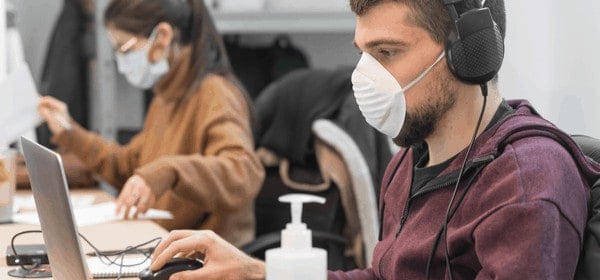Staffing Strategies for COVID-19 Recovery: When to Bring Staff Back
Posted on May 7, 2020
COVID-19 has impacted business across America, and most of the world. Workers have been laid off, furloughed, restricted, or made to work from home, which has impacted revenue and livelihoods around the world. As COVID-19 cases begin to dwindle and things slowly return to normal, what can employers do to return to business as usual?
When Should You Bring Your Staff Back?
While many businesses are eager to give employee’s the all-clear to return to work, there are some key considerations to take into account first. With the understanding that each company is unique and there is not a one-size-fits-all sizing strategy in the wake of COVID-19, there are some general guidelines that one can follow. Important considerations employers during the post-COVID-19 workplace include:
- Are your workers public-facing?
- Is it absolutely necessary for each employee to come to work?
- Does your workplace make social distancing difficult?
- Do you have a wellness policy and COVID-19 precautions?
- Does your business have adequate cleaning supplies?
- Does your business have the recommended Personal Protective Equipment (PPE)?
- Do some parts of your workplace get more traffic than others (breakrooms, bathrooms, main thoroughfares, etc.)
Each of these considerations should be weighed carefully when you make the decision to bring your workers back. Minimizing exposure to COVID-19 risk is important, even as the number of cases fall.
Take the necessary COVID-19 precautions
Though things may be improving, it’s still crucial to ensure your workers are safe. When in doubt, error on the side of caution when it comes to proper hygiene and social distancing in the wake of COVID-19. According to the Centers for Disease Control and Prevention, some effective precautions include:
- Maintain six feet of space between you and other people when at all possible
- Wash hands more thoroughly and frequently than usual
- Sterilize surfaces, particularly in highly-trafficked areas in your workplace
- Wear the recommended PPE
- Do not touch your face
- Do not come to work if you’re sick, even if you don’t think it’s COVID-19
- Minimize multi-use products
Remind employees of these precautions as staff returns to avoid a resurgence of COVID-19 cases.
Preventing a second wave of COVID-19
The 1918 influenza pandemic taught us that a second and even third wave of diseases can occur. While we may start to see a decline in cases of COVID-19, it’s important to stay up to date on health and safety guidelines to help prevent the possibility of a second wave. Fortunately, experts and researchers indicate that a second wave of COVID-19 can be avoided by following the COVID-19 precautions listed above.
Download our eBook: Everything You Need to Know About Manufacturing Staffing
Discover the historical context, recent data, and best practices for staffing manufacturing jobs in America. Download our eBook, “Everything You Need to Know About Manufacturing Staffing” for data-driven strategies for staffing manufacturing jobs.
Staffing for the COVID-19 Recovery
When it becomes safer for your staff to return to your workplace, different strategies will fit different types of business. Preventing the spread of COVID-19 and protecting your employees’ health is a top priority for employers, and the wrong recovery strategy could result in hazards. Here are some strategies for minimizing the risk of infection as employees return to work.
Stagger schedules
Staggering schedules and flexible hours can reduce exposure to contaminants, as it reduces the number of employees present at the same place at the same time. Consider adding swing shifts, mid-shifts, or late shifts to stagger your workers’ schedules. Setting flexible hours and schedule staggering may present some logistical challenges, so be prepared with contingency plans.
Decide which workers can work from home
Keeping the least amount of staff present at work may be in your company’s best interest. Some workers may be able to keep working remotely until COVID-19 is 100% under control, while others are essential for production, manual labor, and in-person services. If you have workers that could resume working from home until the pandemic has slowed to a trickle, it may be a good idea to keep that option open.
Bring back workers in phases
When your workplace reopens, you shouldn’t bring back all of your workers at once. If at all possible, establish “tiers” of essential workers and bring them back to work in phases. This may be the best way to ramp up production while avoiding the risk of infection.
Learn from the COVID-19 restrictions
Though COVID-19 has been devastating for many American businesses and workers, the unprecedented situation and restrictions have revealed new things about the workplace. As a country, millions of workers have adapted to working from home, using video conferencing software, and collaborating digitally full-time. Take a close look at some of the silver linings of the COVID-19 restrictions to inform your future business practices.
Prepare Your Business for Post-COVID-19
This unprecedented scenario has brought new challenges for American businesses. Your company may have taken a temporary step back from production in the past weeks, but this will not last forever. It’s important for businesses to prepare for the post-COVID-19 world with effective and dynamic staffing solutions that work for your company’s specific needs. Connect with TERRA Staffing Group today to get started.
Need help staffing your business?
Categories: HR and Management Advice, Innovation & Change Management
Tags:






